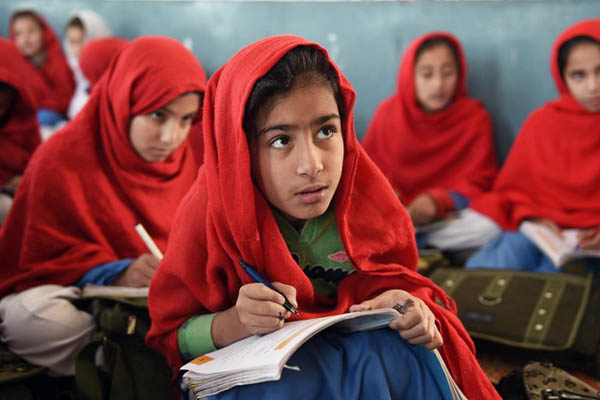
File photo. A. Majeed—AFP
Asghar Soomro, in a recent article for daily Dawn, noted that almost 16,000 out of 36,646 functional public schools in the flood-affected areas of Sindh have been badly damaged. Unfortunately, the absenteeism in them was already between 40 and 60 percent and half of the children attending them were already used to walking out after class 5. It is also common knowledge that the standard of education in these schools was low, particularly in English, Urdu, Sindhi, Math and the Sciences. Despite the Sindh government raising the education budget from 13.4 percent in 2011 to 18.5 percent in 2017, there has been little change in this. No surprise, therefore, that the number of children dropping out has increased from 1.87 million in 2007-08 to 2.57 million now. This story of Sindh, unfortunately, is actually that of all of Pakistan.
One must dwell a little on the fact that schools were doing all right in what is now Pakistan before the Partition of 1947. Our best sons of the soil were educated in state-run schools where teachers were happy and competent. After independence, the schools were still good but the quality was going down with each passing day; primarily due to bad administration and a lack of funds needed to expand the facilities in step with an expanding population. It was not that the theory supporting the state-owned sector had changed; we just couldn’t keep up the pre-Partition quality after the schools started becoming overcrowded and the teachers got squeezed by low salaries. Our case was a third world misplacement of accent: education was not important enough, fighting wars was.
The truth is that all sectors relating to public welfare are in a state of neglect. But education has been particularly affected over the years for two reasons: 1) lack of capacity to deliver at the provincial level because the Constitution, following the 18th Amendment, debars the federal government from education; and 2) Pakistan’s ideology or state-identity along with the rest of the Islamic world. It develops that money is not the problem; funds are often returned unspent and projects badly planned are set aside and those imposed from outside are not owned. Pakistan’s political parties give top priority to education in their manifestoes, promising to lavish astronomical sums on educating the people, despite absence of any experience in the past of handling national education.
Throwing money at education therefore may not solve an “ideological” Pakistan’s crisis of the quality of homo pakistanicus. Today it is a primitive definition of “ideology” that is keeping us down. The madrassas are there to concentrate on the “universal” aspects of Islam but there is no need to duplicate that in the more practical category of education that is planned for non-madrassa schools. Our degrees stopped being recognized internationally long time ago, but in recent years they don’t find acceptance even in the domestic private sector. The biggest flaw in primary education is an unwillingness among many families to allow girls to be educated. Female literacy in Pakistan stands at around 46 percent compared to 69 percent of males, a shockingly low value, especially when compared to 72 percent in Bangladesh. The truth is that Pakistan will not reap the incalculable dividend of “civilization” as long as it keeps its girls away from education.
